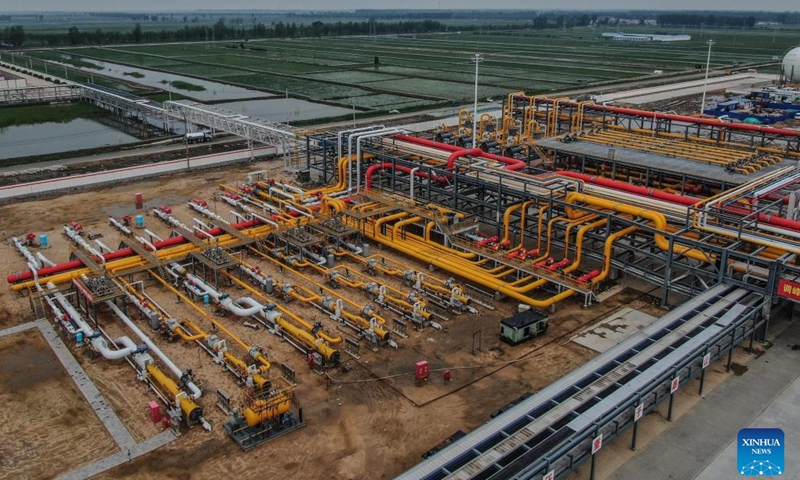Cumulative gas output of China's largest oil and gas field, Changqing, exceeds 600 billion cubic meters

Aerial photo taken on June 15, 2022 shows the PetroChina Liaohe Oilfield gas storage group in Panjin, northeast China's Liaoning Province. The homebred gas injection system was successfully put into operation here in late May, and the overall daily gas injection capacity of Liaohe gas storage group increased from 14 million cubic meters to 30 million cubic meters.(Photo: Xinhua)
The cumulative natural gas output of China's largest oil and gas field - the Changqing field in Northwest China's Erdos basin - has exceeded 600 billion cubic meters (bcm), the first gas field in the country to reach such a level, China Media Group reported on Tuesday.It is sufficient to replace 720 million tons of standard coal and also help reduce carbon emissions by 1.66 billion tons, playing a vital role in optimizing the energy structure and improving the environment, according to the report, which cited a statement from China National Petroleum Corp.
The Changqing field produces about one-fourth of China's total natural gas output, with the gas being sent to more than 40 cities through 10 gas pipelines, which meets the demand of nearly 400 million people.
Chinese enterprises have been stepping up technological innovations, aiming to boost energy production and ensure stable domestic supply, the report said.
At the Changqing field, breakthroughs have been achieved in key sectors like drilling. New technology can guide a drill bit to turn at a depth of more than 3,000 meters underground, according to the report.
The report noted that it took 21 years for the Changqing field to reach the first 100 billion cubic meters of natural gas production, but only 13 more years to reach 600 billion cubic meters. The field has achieved an annual growth of more than 2 billion cubic meters, setting a record in gas output in China.
In the first half of 2023, China's energy supply capacity steadily increased with balanced domestic demand and supply, Dong Wancheng, an official from the National Energy Administration (NEA) said on July 31.
The output of raw coal rose 4.4 percent year-on-year, while that of crude oil was up 2.1 percent and that of natural gas expanded 5.4 percent.
The nation's installed power generation capacity rose 10.8 percent year-on-year to reach 2.71 billion kilowatts, Dong said.
China's green energy industry has progressed through continuous technology upgrades. Li Chuangjun, director of the NEA's new energy and renewable energy department, said that China's new energy innovation has gone through "technology introduction, digestion and absorption and re-innovation," the Xinhua News Agency reported on Tuesday.
For example, the latest China-developed wind turbines can generate 66 million kilowatt-hours of electricity per year, enough to supply 36,000 households for one year, per the Xinhua report.
Global Times



